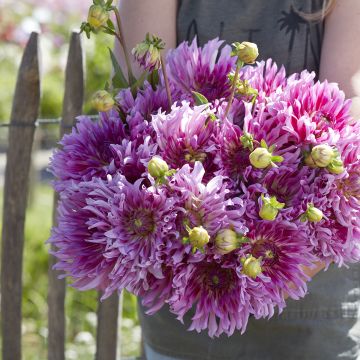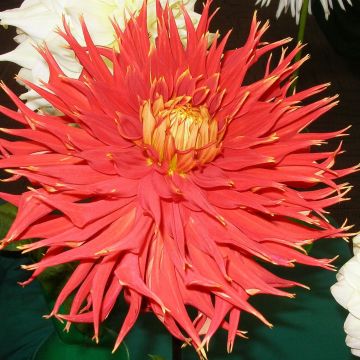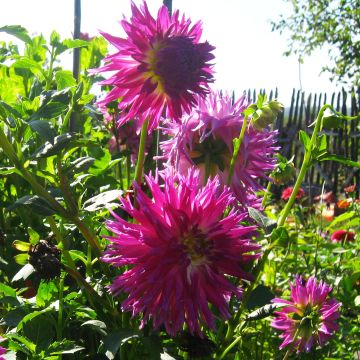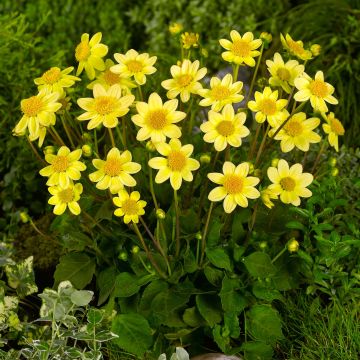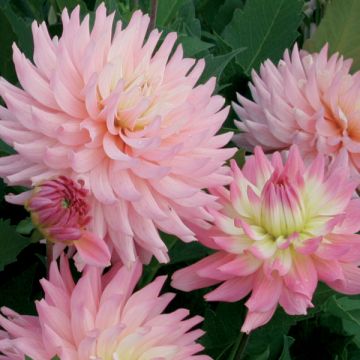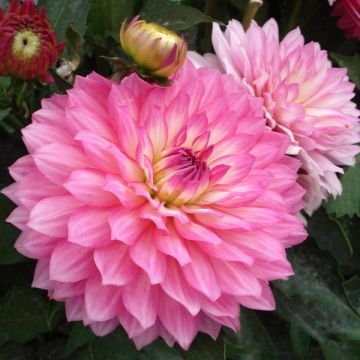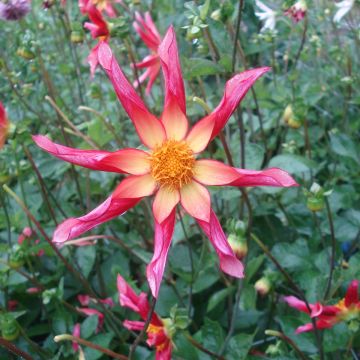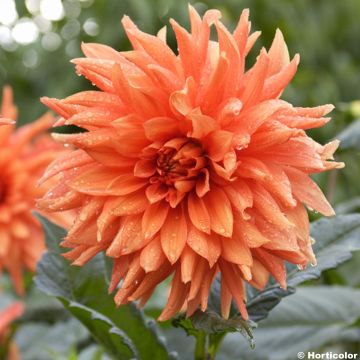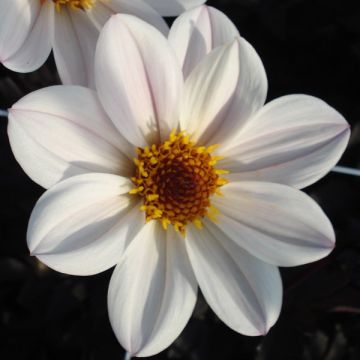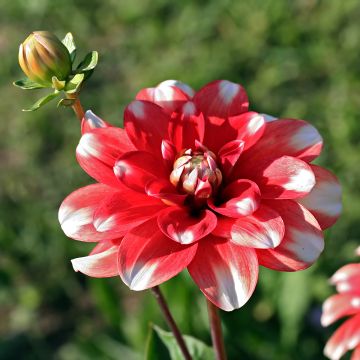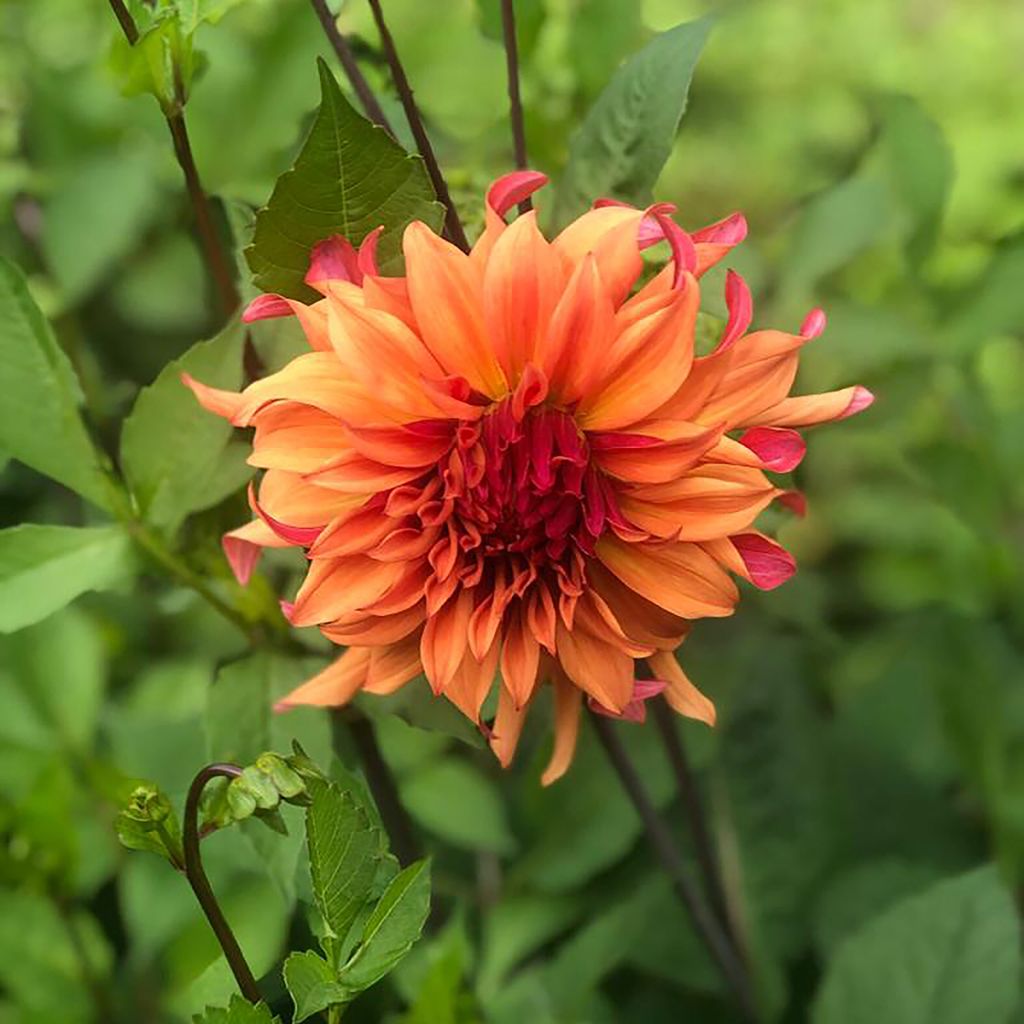

Dahlia cactus Erpeler Ley
Dahlia Erpeler Ley
Dahlia Erpeler Ley
Dahlia
My favorite for 2023. The photo shows it here in the process of blooming, the colors are very accurate. When fully open, it looks like it's in a twist, this type of cactus dahlia is called "curved" and they have become rare. The petals twist in all directions and give it a sense of movement. This year, it ended up next to my old Barbie pink cactus, it's not dull! But for those who, like me, love dahlias in Playmobil colors, it's delightful. It grows fast and tall and doesn't weaken until the end of the season. What else?
Philippe 87, 15/12/2023
Special offer!
Receive a €20 voucher for any order over €90 (excluding delivery costs, credit notes, and plastic-free options)!
1- Add your favorite plants to your cart.
2- Once you have reached €90, confirm your order (you can even choose the delivery date!).
3- As soon as your order is shipped, you will receive an email containing your voucher code, valid for 3 months (90 days).
Your voucher is unique and can only be used once, for any order with a minimum value of €20, excluding delivery costs.
Can be combined with other current offers, non-divisible and non-refundable.
Home or relay delivery (depending on size and destination)
Schedule delivery date,
and select date in basket
This plant carries a 6 months recovery warranty
More information
We guarantee the quality of our plants for a full growing cycle, and will replace at our expense any plant that fails to recover under normal climatic and planting conditions.
Would this plant suit my garden?
Set up your Plantfit profile →
Description
Dahlia 'Erpeler Ley' is an amazing variety with cactus-like flowers, truly different in the architecture of its large flower with warm tones reminiscent of dancing flames. The irregularly twisted and tubular petals or ligules, ranging in colour from apricot to bronze, reveal a reverse side transitioning from cherry red to pink. They bloom from summer to early autumn on a large plant that truly catches the eye. Its flowers are sublime in bouquets.
Dahlias belong to the Asteraceae family and are native to the high plateaus of Mexico. At present, the thousands of horticultural varieties obtained by humans have invaded, to our great pleasure, gardens worldwide. They are hardy perennials with fleshy tubers. The 'Erpeler Ley' variety reaches a height of 1.30m (4ft) to 1.50m (5ft), depending on the growing conditions, with a spread of 60cm (24in). It is classified among the semi-cactus Dahlias; this is a horticultural category defined by the shape of the flower. In this group, the coloured ligules of the head (which we call petals) partially coil around themselves. The flowering of this variety begins in July and ends in October-November. The heads measure 20cm (8in) in diameter. The habit is bushy and upright, and the highly branched stems are hollow. Its leaves are opposite and cordate, meaning they are divided into 3 or 5 toothed lobes. The leaves are a vibrant green, and the stems are a purple-green colour.
To extend the flowering period and encourage repeat flowering, be sure to remove faded flowers. Even better, regularly cut them to create charming colourful bouquets by combining several varieties. 'Erpeler Ley' pairs particularly well with yellow blooms, especially those of sunflowers (annuals or perennials), as well as the blonde spikes of Hordeum jubatum (foxtail barley). In borders, it will perfectly complement Helen's flowers and Cosmos, for example. With Sedum and Miscanthus, it will also create a lovely and original mix.
As a star plant in borders and cottage gardens, Dahlias confidently accompany the most beautiful flowers, but they are also appreciated alongside vegetable plants. In Mexico, this tuberous plant was first cultivated as a root vegetable for consumption. However, its poor taste qualities assigned it the rank of an ornamental plant.
Dahlia Erpeler Ley in pictures
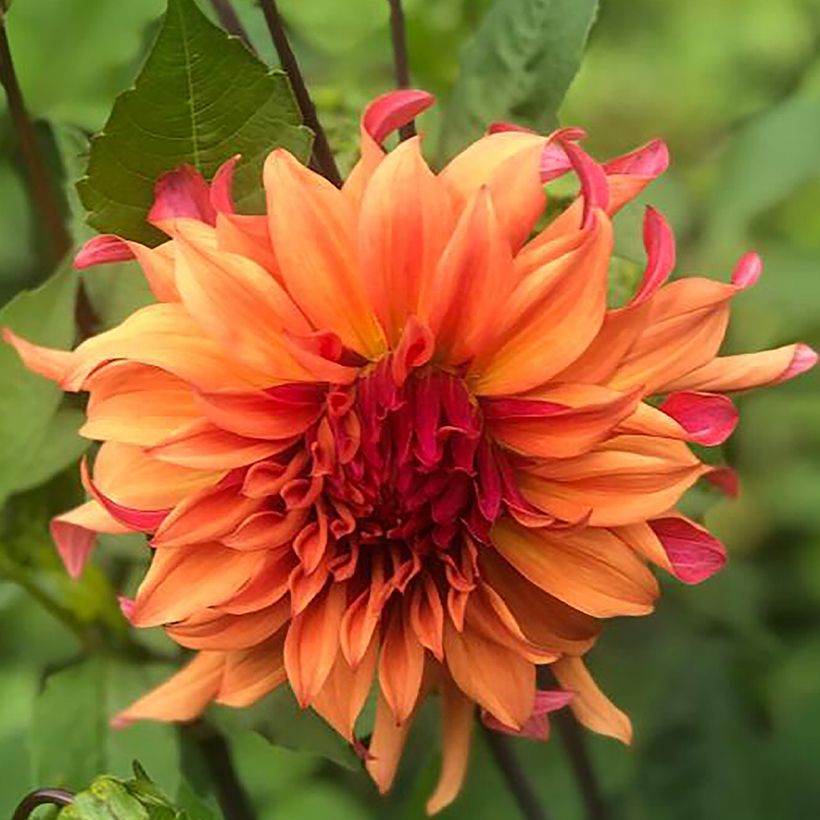

Plant habit
Flowering
Foliage
Botanical data
Dahlia
Erpeler Ley
Asteraceae
Dahlia
Cultivar or hybrid
Other Cactus Dahlia
View all →Planting and care
The Dahlia is easy to grow in all regions. For abundant flowering, it is good to follow a few simple rules, plant the tubers in a sunny location as soon as the last frost has passed, rich, fresh and well-drained soils are perfect. However, stagnant moisture would promote tuber rot. Do not hesitate to amend the soil with compost and sand if necessary. Work the soil deeply and enrich it, for example, with crushed horn or dehydrated blood. Place your tuber and crumble the soil well to close without air pockets. Your dahlia should be covered with about 6cm (2in) of soil.
At the end of planting, water once abundantly and then renew this watering regularly during the first 6 weeks to help with rooting. Dahlias are sensitive to cold, they need to be overwintered. In November, the first frosts cause the foliage to blacken, it is time to dig them up. Carefully remove the tubers. Remove as much soil as possible. Let the foliage dry so that the tubers can replenish their reserves. Then cut the stems to 10cm (4in). Spread your bulbs in a crate on newspaper. Store them in a frost-free, dry, cool, and dark place, such as a frost-free garage or an attic.
In southern regions, close to the coast, where there are few frosty days per year, it is possible to leave them in place. In this case, simply cover the ground with a layer of leaves or straw as protection. This tall Dahlia, with its hollow stems, does not withstand wind or heavy rain well. To overcome this inconvenience, you can stake it, but let's agree, it is not very aesthetic. However, by pinching the stems early or removing the axial flower buds, you will spread out the habit of the plant, which will offer more resistance to bad weather. At the same time, you channel the flow of sap to a single flower that will become larger and sturdier.
Planting period
Intended location
Care
Planting & care advice
-
, onOrder confirmed
Reply from on Promesse de fleurs
Similar products
Haven't found what you were looking for?
Hardiness is the lowest winter temperature a plant can endure without suffering serious damage or even dying. However, hardiness is affected by location (a sheltered area, such as a patio), protection (winter cover) and soil type (hardiness is improved by well-drained soil).

Photo Sharing Terms & Conditions
In order to encourage gardeners to interact and share their experiences, Promesse de fleurs offers various media enabling content to be uploaded onto its Site - in particular via the ‘Photo sharing’ module.
The User agrees to refrain from:
- Posting any content that is illegal, prejudicial, insulting, racist, inciteful to hatred, revisionist, contrary to public decency, that infringes on privacy or on the privacy rights of third parties, in particular the publicity rights of persons and goods, intellectual property rights, or the right to privacy.
- Submitting content on behalf of a third party;
- Impersonate the identity of a third party and/or publish any personal information about a third party;
In general, the User undertakes to refrain from any unethical behaviour.
All Content (in particular text, comments, files, images, photos, videos, creative works, etc.), which may be subject to property or intellectual property rights, image or other private rights, shall remain the property of the User, subject to the limited rights granted by the terms of the licence granted by Promesse de fleurs as stated below. Users are at liberty to publish or not to publish such Content on the Site, notably via the ‘Photo Sharing’ facility, and accept that this Content shall be made public and freely accessible, notably on the Internet.
Users further acknowledge, undertake to have ,and guarantee that they hold all necessary rights and permissions to publish such material on the Site, in particular with regard to the legislation in force pertaining to any privacy, property, intellectual property, image, or contractual rights, or rights of any other nature. By publishing such Content on the Site, Users acknowledge accepting full liability as publishers of the Content within the meaning of the law, and grant Promesse de fleurs, free of charge, an inclusive, worldwide licence for the said Content for the entire duration of its publication, including all reproduction, representation, up/downloading, displaying, performing, transmission, and storage rights.
Users also grant permission for their name to be linked to the Content and accept that this link may not always be made available.
By engaging in posting material, Users consent to their Content becoming automatically accessible on the Internet, in particular on other sites and/or blogs and/or web pages of the Promesse de fleurs site, including in particular social pages and the Promesse de fleurs catalogue.
Users may secure the removal of entrusted content free of charge by issuing a simple request via our contact form.
The flowering period indicated on our website applies to countries and regions located in USDA zone 8 (France, the United Kingdom, Ireland, the Netherlands, etc.)
It will vary according to where you live:
- In zones 9 to 10 (Italy, Spain, Greece, etc.), flowering will occur about 2 to 4 weeks earlier.
- In zones 6 to 7 (Germany, Poland, Slovenia, and lower mountainous regions), flowering will be delayed by 2 to 3 weeks.
- In zone 5 (Central Europe, Scandinavia), blooming will be delayed by 3 to 5 weeks.
In temperate climates, pruning of spring-flowering shrubs (forsythia, spireas, etc.) should be done just after flowering.
Pruning of summer-flowering shrubs (Indian Lilac, Perovskia, etc.) can be done in winter or spring.
In cold regions as well as with frost-sensitive plants, avoid pruning too early when severe frosts may still occur.
The planting period indicated on our website applies to countries and regions located in USDA zone 8 (France, United Kingdom, Ireland, Netherlands).
It will vary according to where you live:
- In Mediterranean zones (Marseille, Madrid, Milan, etc.), autumn and winter are the best planting periods.
- In continental zones (Strasbourg, Munich, Vienna, etc.), delay planting by 2 to 3 weeks in spring and bring it forward by 2 to 4 weeks in autumn.
- In mountainous regions (the Alps, Pyrenees, Carpathians, etc.), it is best to plant in late spring (May-June) or late summer (August-September).
The harvesting period indicated on our website applies to countries and regions in USDA zone 8 (France, England, Ireland, the Netherlands).
In colder areas (Scandinavia, Poland, Austria...) fruit and vegetable harvests are likely to be delayed by 3-4 weeks.
In warmer areas (Italy, Spain, Greece, etc.), harvesting will probably take place earlier, depending on weather conditions.
The sowing periods indicated on our website apply to countries and regions within USDA Zone 8 (France, UK, Ireland, Netherlands).
In colder areas (Scandinavia, Poland, Austria...), delay any outdoor sowing by 3-4 weeks, or sow under glass.
In warmer climes (Italy, Spain, Greece, etc.), bring outdoor sowing forward by a few weeks.































